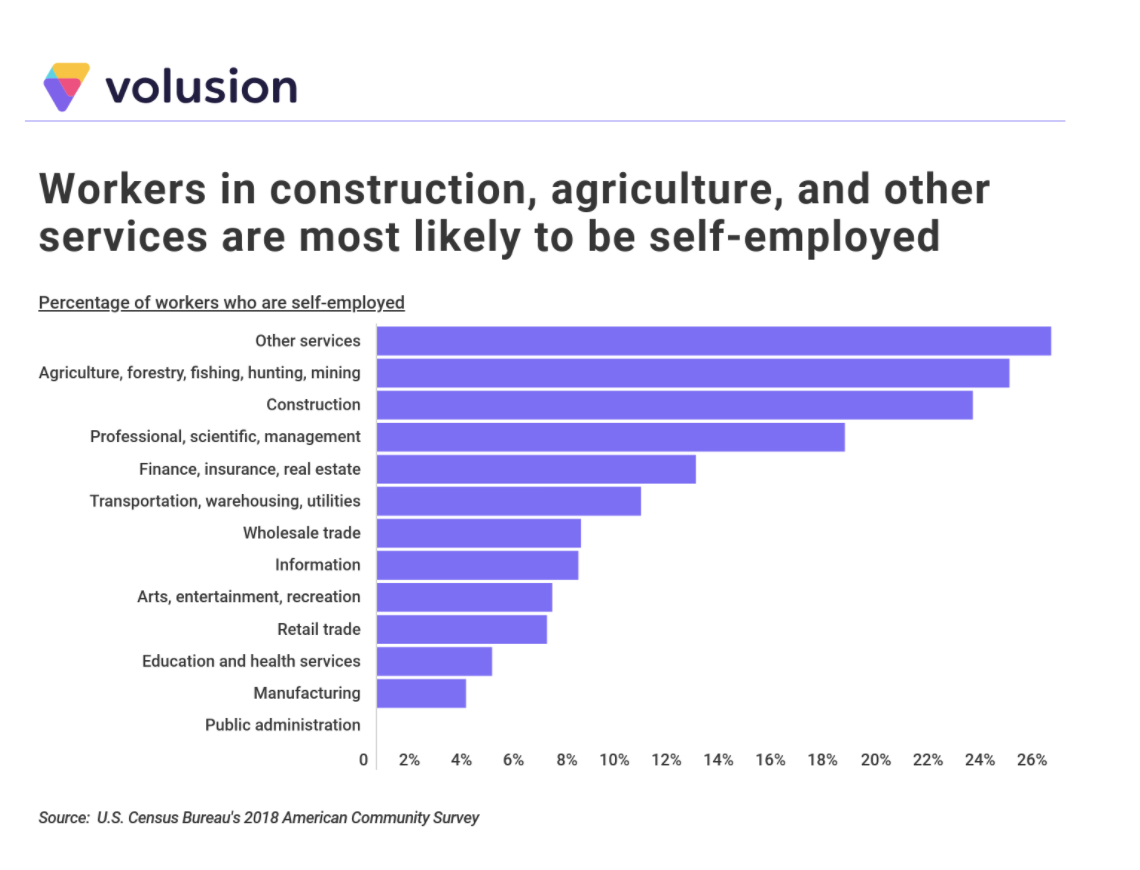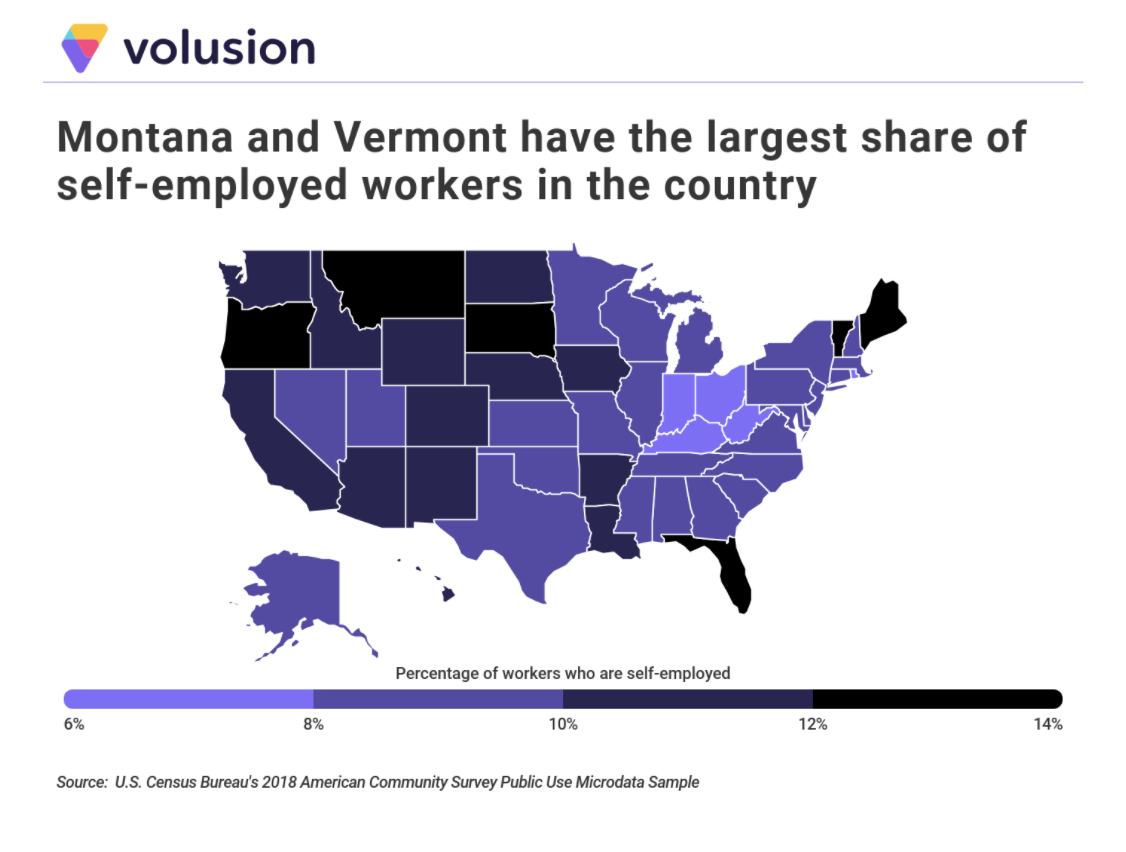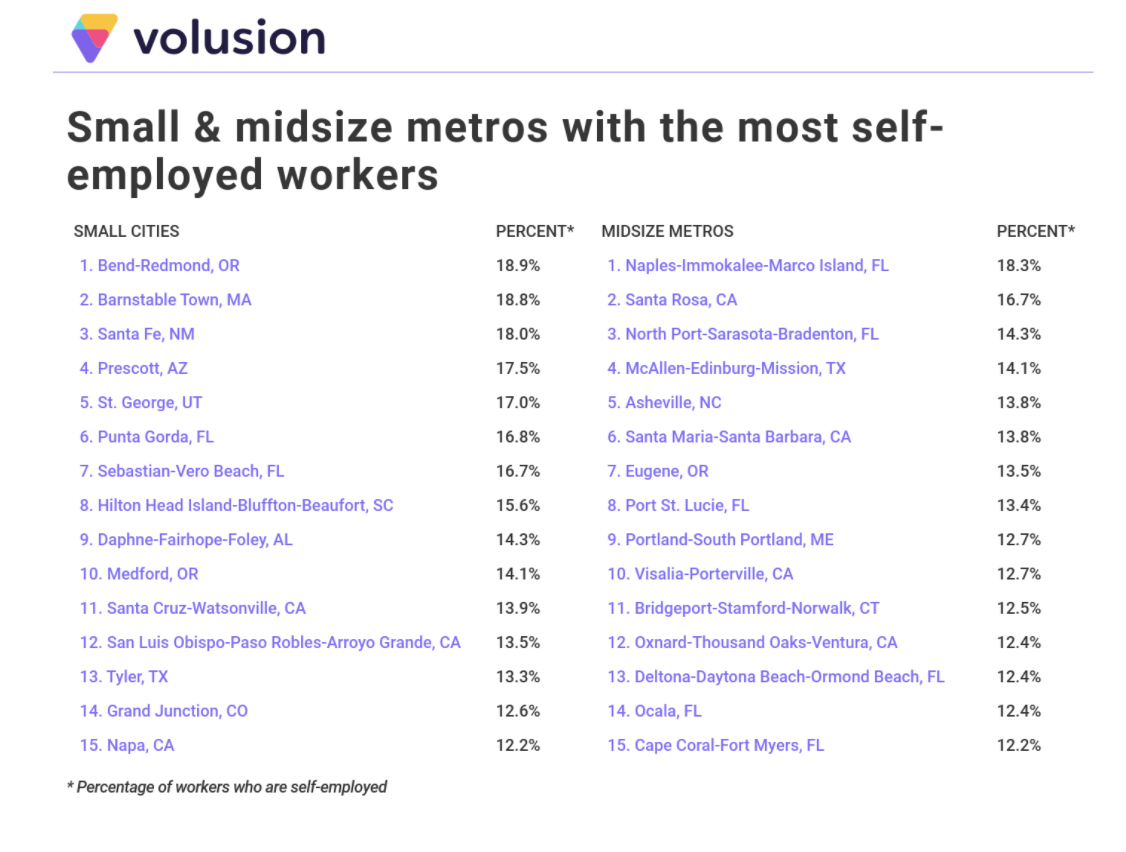[ad_1]
As tens of millions of jobs disappeared over the last few months, many found themselves for the first time depending on government unemployment benefits, which right now are the only thing keeping the consumer – the lifeblood of the American economy – on life support. But while some more industrious workers might strike out on their own – operating as sole proprietors or some other pass-through tax classification – many more will likely be forced to take the “freelance” route, which involves many of the same trappings of the sole-proprietor route, with one notable exception: the self-employed freelancer doesn’t make enough to justify incorporation.
Employees who met this classification, including many hourly workers at media organizations and publishers, are particularly vulnerable to the vicissitudes of fortune.
A recent report by Volusion examines where America’s self-employed live, which can help offer some insight into how the spike in unemployment might impact local economies, housing markets, etc.
Read the full report below:
The coronavirus pandemic has cost a record number of Americans their jobs as much of the economy shut down in mid-March. Even as some states start to reopen, many businesses will remain closed or operate in a reduced capacity, meaning millions of workers will remain unemployed.
According to Census Bureau data, there are over 15 million self-employed workers in the U.S., making up about 9.7% of the nation’s workforce. Self-employed workers are especially vulnerable during economic downturns since they do not have the same type of job protections as other workers. The CARES Act provides emergency government aid to workers affected by the pandemic, including the self-employed, who might normally fall through the social safety net. But these funds have been difficult to secure and can have long wait times. Furthermore, confusing messaging around the loans leave many self-employed workers unsure about what the funds can be used for.
The self-employed, which for the purpose of this analysis includes those adults who operate either incorporated or unincorporated businesses, are represented in every industry sector except public administration. Other services—a catchall industry sector that includes, among others, car repairs, barbershops, salons, dry-cleaning, and pet care services—has the largest share of self-employed workers at nearly 26%. Both the Agriculture, forestry, fishing and hunting, and mining industry and the Construction industry have high rates of self-employment, at 24% and 23% respectively.
As of 2018 (the most recent year of Census data available), these three industry sectors accounted for over 5 million self-employed workers, but a combination of non-essential business closures, disruptions of the food supply chain, and a hold on construction work in many states will likely drive these numbers down.
While almost 10% of workers are self-employed at the national level, the self-employment rate varies considerably across cities and states. Montana and Vermont claim the highest percentages of self-employed workers in the country, at 14% and 13.4%, respectively. On the other end of the spectrum, West Virginia has the lowest share of self-employed workers, with just 6.3% of workers who are self-employed.
To find the locations with the most self-employed workers, researchers at Volusion used data from the U.S. Census Bureau. The researchers ranked metro areas according to the share of workers who are self-employed. Researchers also looked at the total number of self-employed workers, the median income for self-employed workers, and the median income for all workers.
To improve relevance, only metropolitan areas with at least 100,000 people were included in the analysis. Additionally, metro areas were grouped into the following cohorts based on population size:
- Small metros: 100,000-349,999
- Midsize metros: 350,000-999,999
- Large metros: 1,000,000 or more
Here are the metropolitan areas with the largest percentage of workers who are self-employed.
Read more on: Volusion
[ad_2]
Source link




